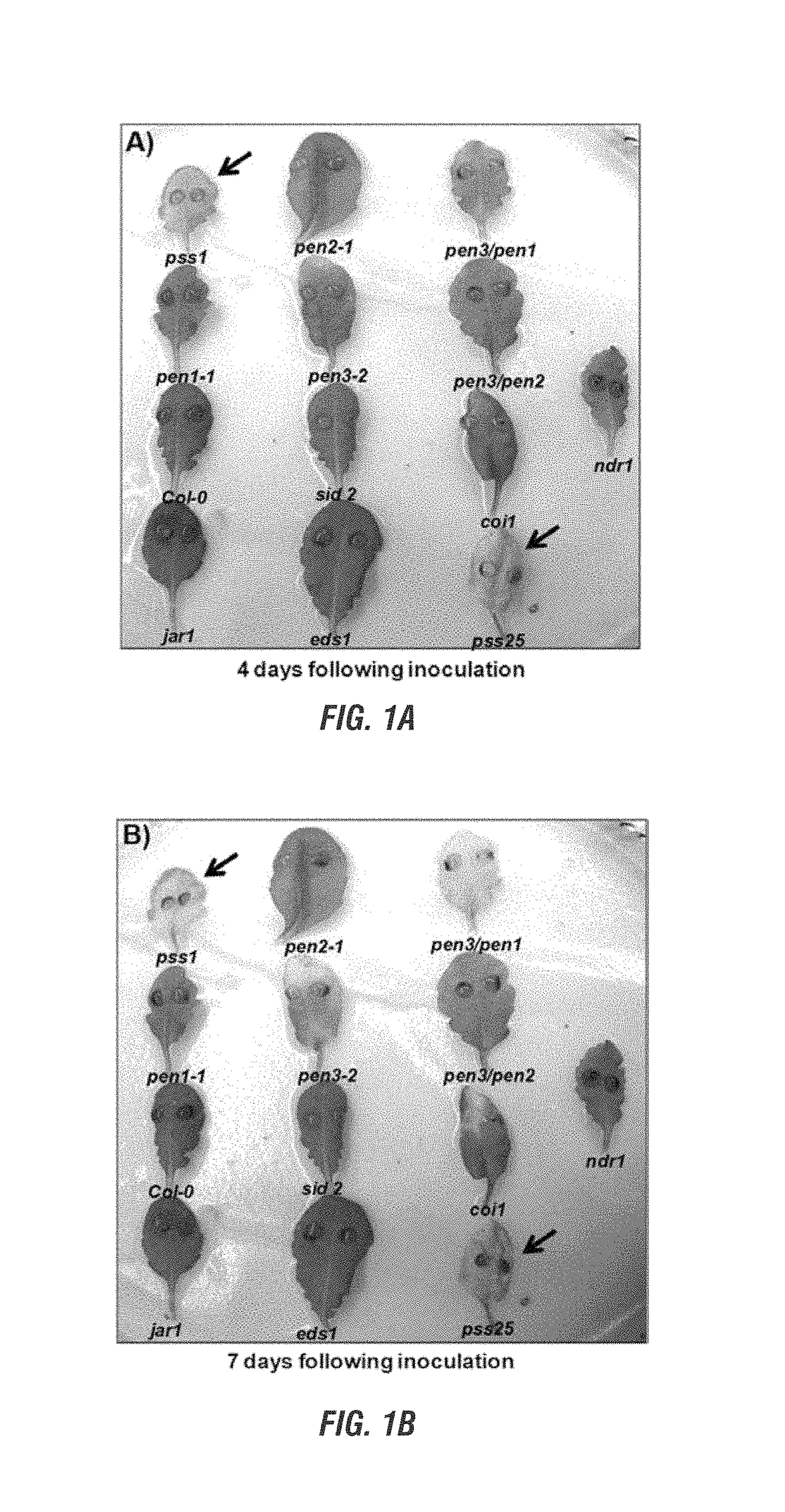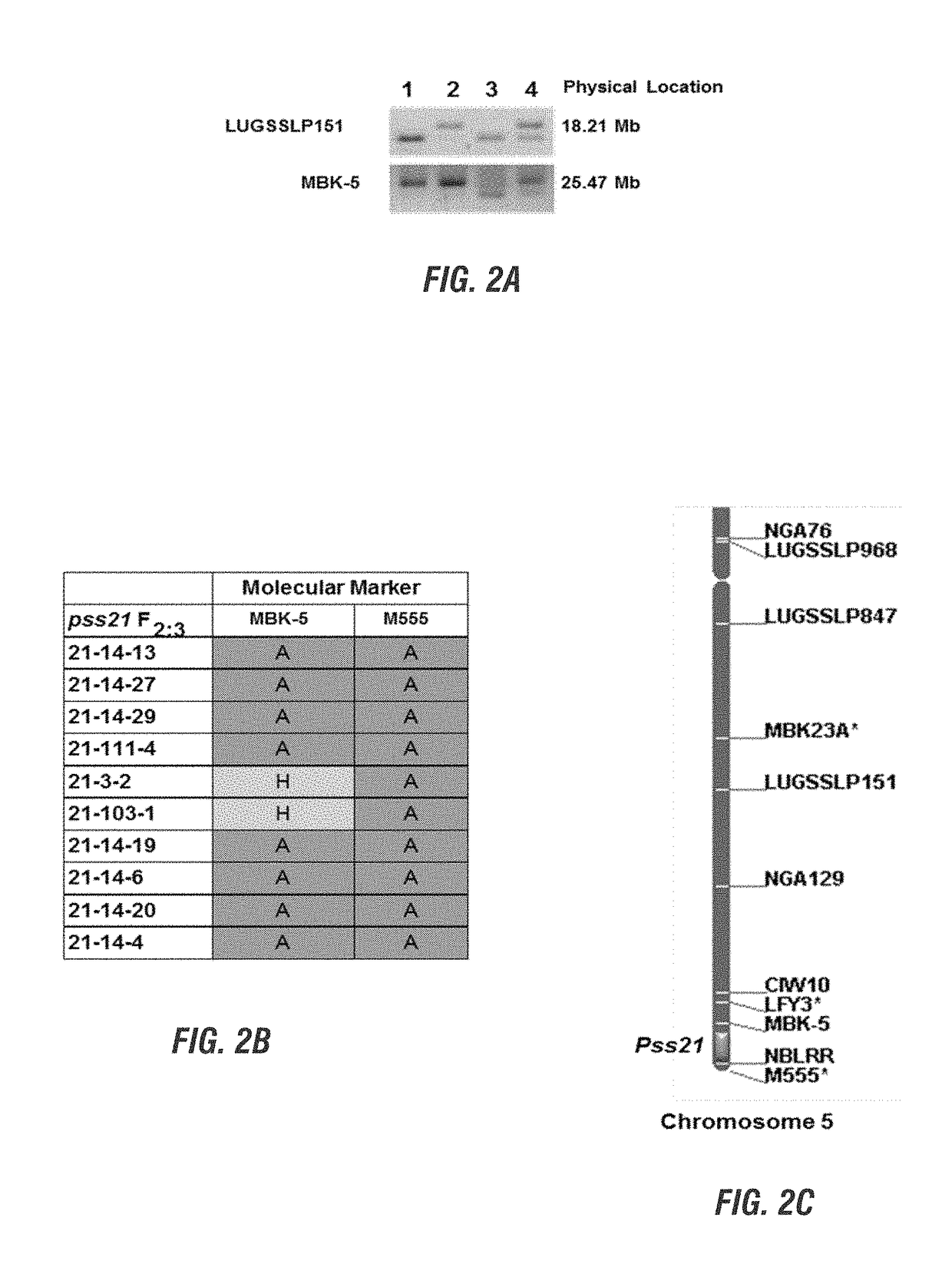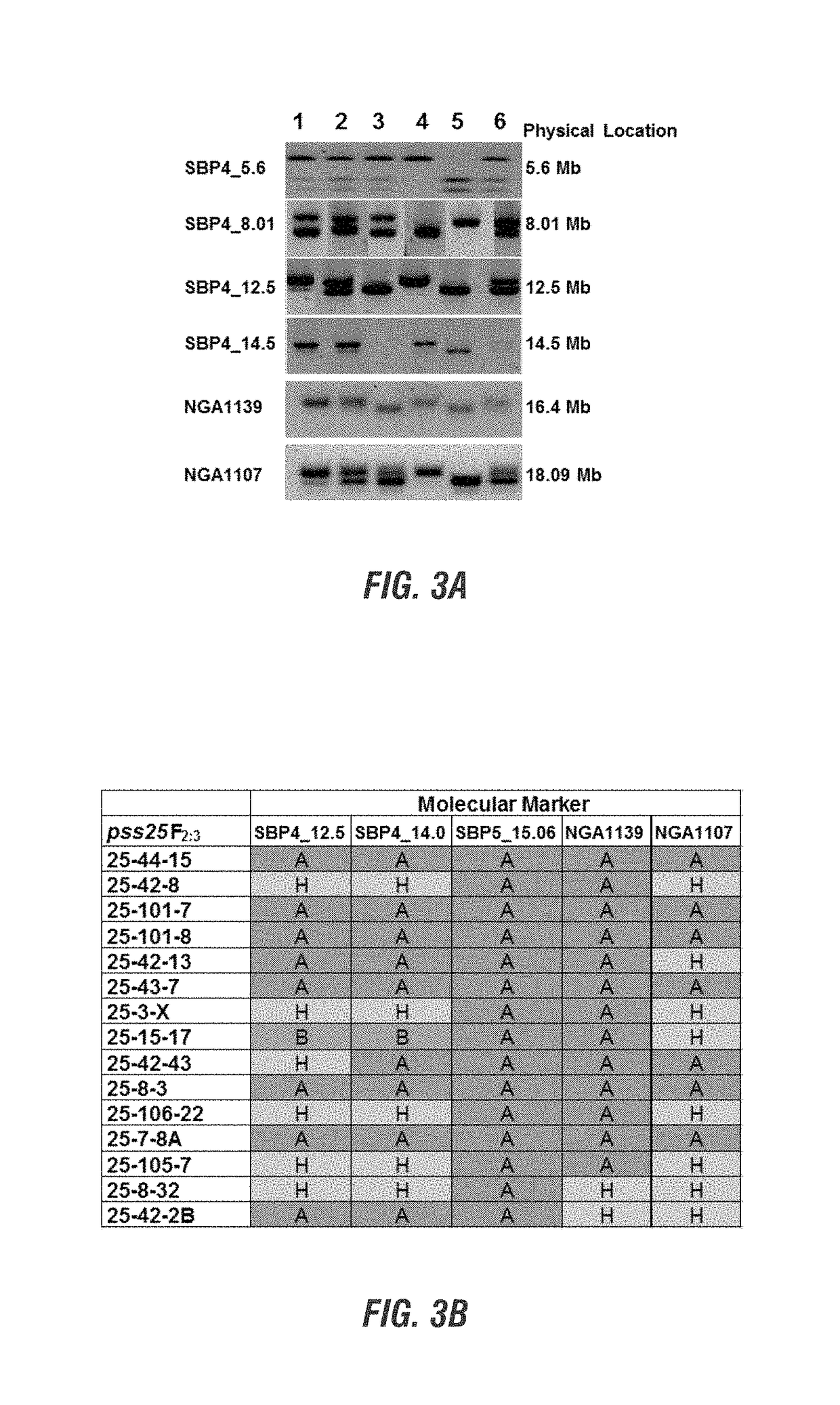Arabidopsis nonhost resistance gene(s) and use thereof to engineer SDS resistant plants
a technology of arabidopsis and resistance gene, applied in the field of plant genetics, can solve the problems of uneconomical and environmentally unsound fungicide use as a control measure in soybean production, production problems, and loss of many soybean fields
- Summary
- Abstract
- Description
- Claims
- Application Information
AI Technical Summary
Benefits of technology
Problems solved by technology
Method used
Image
Examples
example 1
Five Arabidopsis Homozygous Mutants that are Infected by P. sojae.
[0170]We observed that single cells of the Arabidopsis mutant, pen1-1, but not that of its progenitor ecotype, Columbia, are penetrated by P. sojae. This observation suggested that the first line of defense in Arabidopsis against the pathogen is lost in this mutant. We used the chemical mutagen, ethyl methane sulfonate (EMS), to generate 3,556 EMS-induced mutant plants in pen1-1. Then we have screened over 3,000 M2 families developed from these mutants for possible loss of Fusarium resistance in 24-well microtiter plates as follows. Seedling were grown in water for 10 days and then inoculated with P. sojae zoospores for 48 hours in wells of microtiter plates. Thereafter, dead cells of inoculated seedlings were stained with trypan blue dye (Koch and Slusarenko 1990) and identified by conducting light microscopy. We identified 30 putative P. sojae susceptible mutants. We tentatively named these putative mutants (putant...
example 2
[0178]According to the invention, one can create SDS resistant soybean cultivars by transferring Arabidopsis nonhost resistance genes Pss21 and Pss25 genes to soybean through transformation procedure. Earlier we have shown that pss21 and pss25 mutants lacking functional Pss21 and Pss25 genes are susceptible to both Phytophthora sojae and F. virguliforme. This observation suggested that functional Pss21 and Pss25 genes are essential for resistance of Arabidopsis to both pathogens. Since functional Pss21 and Pss25 genes are required for resistance of Arabidopsis against the two soybean pathogens, P. sojae and F. virguliforme, transfer of these two genes to soybean by transformation procedure will enhance resistance of soybean against both pathogens.
Identification of Arbidopsis Pss21 and Pss25 Genes that Confer Broad Spectrum Resistance to Soybean SDS Pathogen Fusarium virguliforme and Root Rot Pathogen Phytophthora sojae
[0179]Map-based or positional cloning of a gene is accomplished ...
example 3
Identification of Pss6 Encoding a Vesicle-Associated Membrane Protein 724.
[0192]A similar map-based cloning approach in cloning Pss6 that confers resistance of Arabidopsis to both P. sojae and F. virguliforme. The gene was mapped to Chromosome 6 and four candidate Pss6 genes were identified from comparison genome sequence of pss6 mutant with Col-0 reference genome sequence. They are: At5g15780, At4g16680, At4g15130, and At4g17100. Analysis of T-DNA insertion mutants established that At4g15130 encoding a vesicle-associated membrane protein 724 is the Pss6 gene.
[0193]FIG. 6. Phenotypes of Arabidopsis mutant plants with T-DNA insertions in candidate Pss6 genes. A) Three-week-old Arabidopsis seedlings of Col-0, Nd-0, pen1-1, pss6, T-DNA knock-out lines of candidate Pss6 genes (At4g15130, At4g15780, At4g17100 and At4g16680) were inoculated with P. sojae spores at a concentration of 3×105 spores / ml. Symptoms were evaluated after 48 hour post inoculation. E, T-DNA insertions in exons. B) M...
PUM
| Property | Measurement | Unit |
|---|---|---|
| temperature | aaaaa | aaaaa |
| temperature | aaaaa | aaaaa |
| pH | aaaaa | aaaaa |
Abstract
Description
Claims
Application Information
 Login to view more
Login to view more - R&D Engineer
- R&D Manager
- IP Professional
- Industry Leading Data Capabilities
- Powerful AI technology
- Patent DNA Extraction
Browse by: Latest US Patents, China's latest patents, Technical Efficacy Thesaurus, Application Domain, Technology Topic.
© 2024 PatSnap. All rights reserved.Legal|Privacy policy|Modern Slavery Act Transparency Statement|Sitemap



